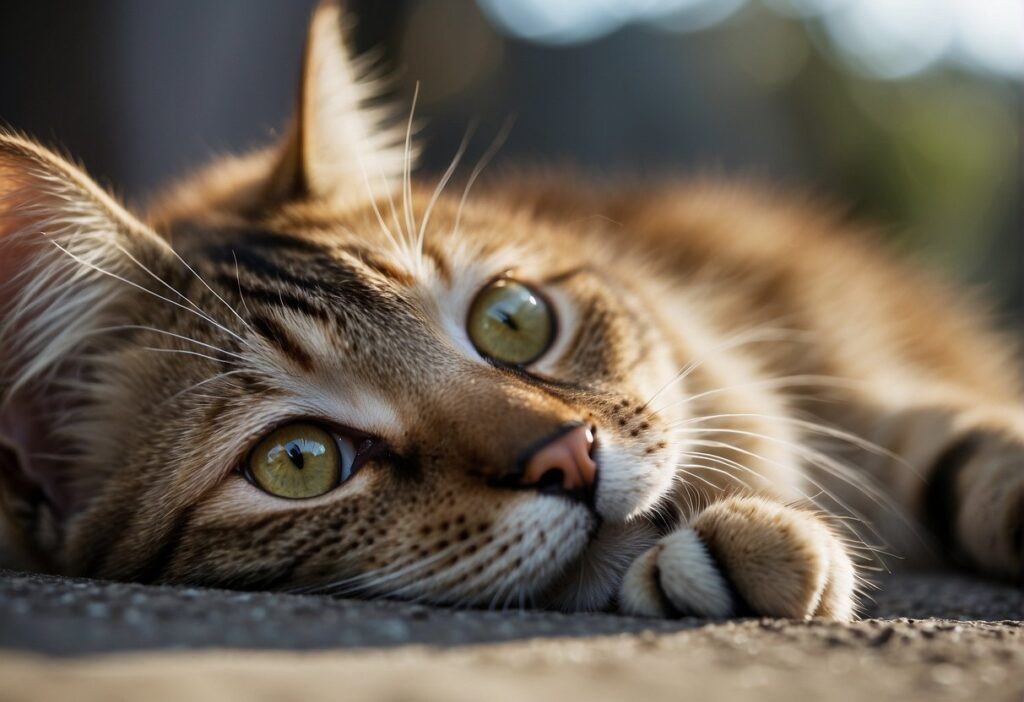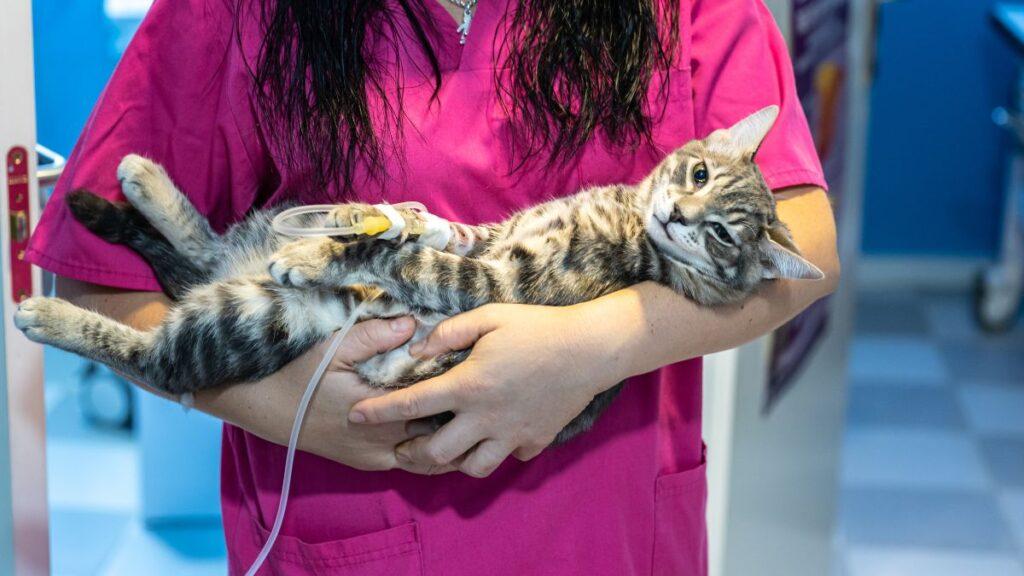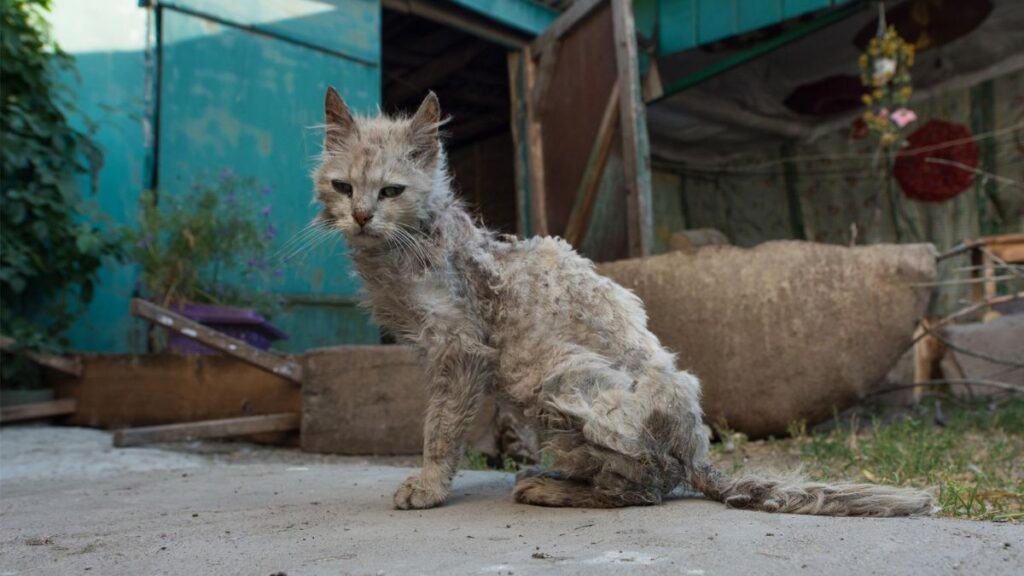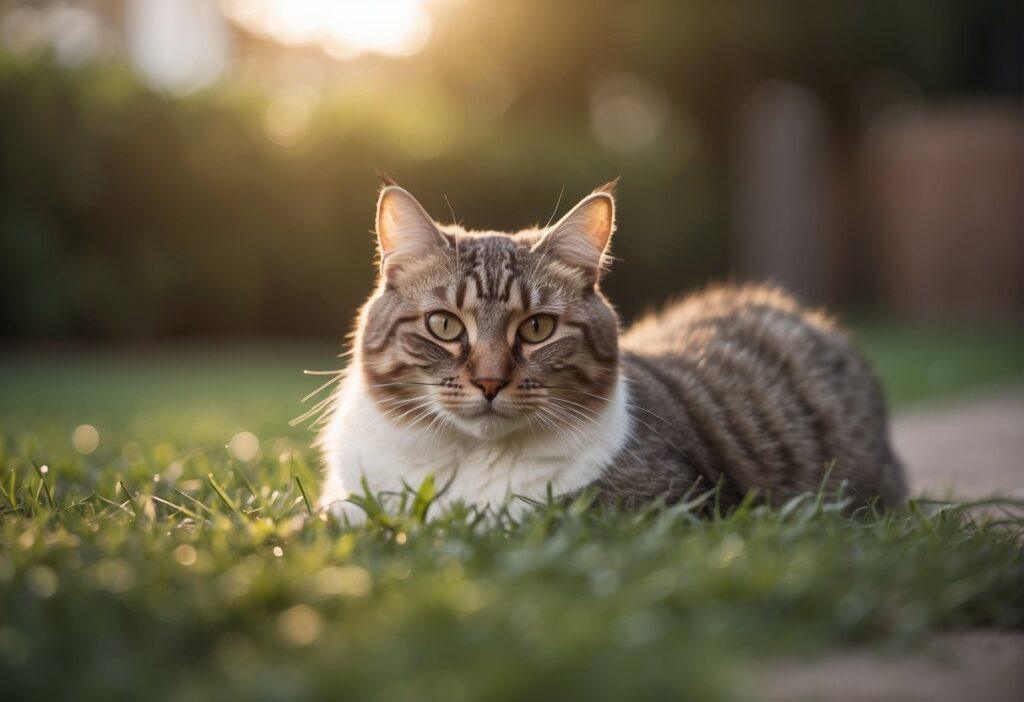Understanding the difference between healthy and recessed eyes in cats is crucial—it signals potential dehydration or other serious health conditions.
In this article about cats’ sunken eyes vs normal cat eyes, we shed light on the effects of dehydration, pinpointing symptoms that pet owners should be alert to.
It emphasizes the role of water in preventing these issues and examines the physical signs that may indicate health problems, including diseases often related to dehydration.
Offering practical prevention and treatment strategies, this guide is an indispensable tool for cat owners and animal lovers, providing essential knowledge to protect the vitality and joy of our treasured pets.
Understanding Cat Dehydration

Dehydration in cats occurs when there is a reduction in body fluid levels, which affects normal physiological functions.
Identifying Dehydration in Cats
Owners should know specific symptoms to determine if a cat is dehydrated. Sunken eyes are an easily observable sign.
Checking a cat’s gums can also be informative; healthy gums are moist, while dehydrated gums may appear dry or tacky.
Another method involves assessing skin elasticity by gently lifting the cat’s skin near the shoulder blades and observing how quickly it returns to place.
Slower retraction indicates possible dehydration.
Severity and Health Implications
The severity of dehydration in cats can range from mild to severe. Mild cases may result in lethargy and reduced skin elasticity, whereas severe dehydration can lead to serious health issues.
This condition affects the cat’s body systems and can lead to organ failure if not addressed promptly.
Early signs of dehydration should prompt owners to seek dehydration treatment options, which may include subcutaneous fluids or intravenous therapy.
A third eyelid may indicate a cat’s health is compromised, which warrants veterinary attention.
Water Intake and Management

Proper hydration is essential for the health of cats, affecting everything from kidney function to digestion.
Importance of Water for Cats
Cats require a consistent supply of clean water for optimal health. Water aids in digestion, temperature regulation, and elimination of waste.
Every vital function in a feline’s body requires adequate water. Dehydration can lead to serious health issues. Adult cats generally need around one ounce of water per pound of body weight daily.
Ensuring Adequate Water Consumption
To ensure cats receive enough water, owners should provide multiple sources of fresh water.
A water bowl should be filled with fresh water daily, and the bowl’s location may impact a cat’s willingness to drink.
Water fountains can encourage more drinking due to the movement of water. Including wet food in the diet can significantly increase a cat’s water intake due to higher water content.
Cats on a dry food diet monitor water consumption closely, as this diet provides little moisture, increasing the risk of dehydration.
Small amounts of water given frequently can help maintain proper hydration. In severe cases of dehydration, a veterinarian should be consulted immediately.
Related: Are Cat Palms Toxic to Cats: A Clear Guide to Your Feline’s Safety
Physical Indicators of Health Issues

A cat’s overall health is often reflected in its physical appearance, particularly in the eyes and associated symptoms. Recognizing these signs can help identify health issues early.
Examining the Cat’s Eyes
Sunken eyes in a cat can signal dehydration or weight loss, typically seen in the orbital fat pad reduction behind the eye.
Older cats might exhibit this due to natural aging or underlying health problems. Observable signs:
- Sunken Eyes: Indicative of potential dehydration or serious health concerns.
- Discharge or Crusting: Could point toward infections or other eye conditions.
Additional Physical Symptoms to Monitor
Monitoring a cat’s general well-being includes observing their gums, skin, appetite, and vital signs like heart rate and body temperature. Important indicators include:
- Gums: A healthy cat’s gums should be pale pink and moist. Sticky or dry gums might suggest dehydration or other health problems.
- Skin Elasticity: Skin that doesn’t snap back quickly when pinched may indicate dehydration.
- Appetite: A loss of appetite can indicate discomfort or illness.
- Vital Signs: Abnormalities in heart rate or body temperature can indicate stress or health issues.
- Below the Shoulder Blades: Significant weight loss might be felt in this area where cats typically accumulate fat.
Diseases & Conditions Associated with Dehydration

Dehydration in cats can lead to various health issues, particularly affecting kidney function and potentially indicative of severe underlying conditions.
Common Illnesses in Dehydrated Cats
Dehydration is often a symptom of an underlying health condition. Kidney disease is one of the most common ailments linked with cat dehydration.
It can compromise kidney function, crucial for filtering waste and regulating hydration.
Pet parents may notice increased thirst, urination, lethargy, and sometimes sunken eyes in their feline companions.
- Kidney Disease
- Increased thirst
- More frequent urination
- Reduced appetite
Recognizing Serious Conditions
Sunken eyes in cats can be a sign of serious conditions beyond dehydration. One such condition is Horner’s syndrome, which can cause pupil size changes, eyelids drooping, and sunken eyes.
Identifying the underlying cause of dehydration and sunken eyes is important, as they may reflect a more severe condition or overall health issue.
Quick and accurate diagnosis is vital for the cat’s health and may involve blood tests, urinalysis, and other diagnostics to determine the underlying health condition.
- Horner’s Syndrome
- Changes in pupil size
- Drooping of the eyelids
- Sunken eyes due to muscle relaxation
Prevention and Treatment Strategies

Recognizing early symptoms of illness and dehydration in cats is pivotal for ensuring their well-being.
Timely intervention can prevent the progression to a state of emergency, particularly for a pet’s eye health.
Proactive Measures for Hydration
Cat owners should ensure a continuous supply of fresh water to mitigate the risk of dehydration. Cats may be encouraged to drink more water by:
- Providing multiple water bowls around the home.
- Cat water fountains can attract pets with movement and make drinking more appealing.
The easiest way to promote hydration may involve incorporating wet food into their diet since it has a higher moisture content than dry food.
Immediate Actions and Professional Care
Cat owners should act quickly upon noticing sunken eyes or signs of illness, such as panting (atypical for cats compared to dogs). Initial steps include:
- Offering water and monitoring intake.
- Check for other symptoms such as lethargy or reduced appetite.
If the severity of dehydration seems significant or the cat’s condition does not improve rapidly, seeking veterinary care is crucial. The proper treatment administered by a professional may involve:
- Administering subcutaneous fluids or intravenous therapy.
- Evaluating underlying causes through diagnostic tests.
For a rapid decline in a pet’s condition, an emergency visit to an emergency vet or veterinary emergency hospital is warranted to ensure that the furry friend returns to a healthy shade of health.
Introducing Cory Haasnoot, a devoted father, loving husband, and enthusiastic cat lover. As a key content creator for CatFurLife.com, Cory blends his family values and passion for felines into engaging and informative content. He brings a unique perspective to the site, sharing cat care tips and how cats can enrich family life and bring joy to households.

